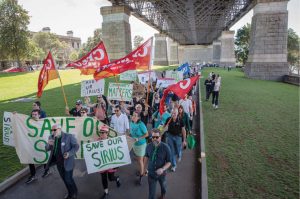20 July 2019
Kathlyn Loseby
The magnitude of the crisis currently facing Australia’s construction industry demands nothing short of a revolution, turning current building practice on its head to put quality and safety back on top where they belong.
As an architect with three decades’ experience working on all manner and complexity of projects in Australia, Europe, the Middle East and Asia, I can’t overstate how serious and urgent the situation has become. It is a worldwide issue with construction failures such as the ‘leaky condo’ crises in Canada in the 90s, the ‘wet building syndrome’ in New Zealand in the 90s – early 2000, the Latvian supermarket roof collapse in 2013, and Grenfell fire in the UK in 2017. We are not alone in our concerns.
The issues are systemic and reach right around this wide brown land of ours. However, the issues have managed to unite industry, and now hopefully governments, on the need for reform and a consistent national approach to fix the mess.
This week’s agreement by the nation’s building ministers is a welcome step towards implementing solutions that can both address the legacy of defective buildings and prevent history from repeating as we move forward.
It is good news for consumers and has also created a sense of cautious optimism among building professionals.
But this national approach, encouraging as it is, doesn’t mean anyone is off the hook. There is an enormous amount of urgent work yet to be done, starting with the rectification of buildings that have already been identified as posing a risk from flammable cladding and other defects. Victoria has stepped up to the plate with a package enabling this work to
commence. We call on NSW and every other state and territory to follow suit. The sooner the better.
The Commonwealth must also play its part, together with industry. The safety of our built environment is a collective responsibility that needs collective action. At the Institute of Architects we are actively engaging with all stakeholders from developers, designers, engineers and builders through to strata owner consumers to foster an holistic approach focussed on finding effective, lasting solutions.
These solutions must address the root cause of the problem, namely a culture and practice that has put time and cost (or greed and speed to put it bluntly) above quality. That equation has seen quality lose out, jeopardising both people’s safety and their economic security. It’s an equation that must now be reversed.
At the same time, continuous, truly independent oversight by a properly registered and qualified professional must be reintroduced; this is the only way quality will be maintained.
People’s homes are, in most cases, their greatest asset. They are also a sanctuary, the secure base from which we live our lives. They must be protected. Stronger regulation and greater compliance are essential but on their own they are not enough, especially for complex projects. The only way to achieve the level of lasting change required is to embed quality into the construction process from start to finish and at all points in between.
This is at the heart of the Australian Institute of Architects’ concerns with the reform proposals put forward by the NSW Government. While the Building Stronger Foundations discussion paper, for which submissions are due next week, includes many meritorious measures, it also has some glaring gaps.
We, together with much of industry, wholeheartedly support the creation of a Building Commissioner, the introduction of a new building practitioners registration scheme and legislating a duty of care to building owners.
What’s missing, though, is the mechanism to ensure that as buildings are being constructed corners aren’t being cut, the specified and approved materials aren’t being substituted out for inferior products and that the best interests of the owners (current and future) are being served.
As part of a profession whose members have been regulated for almost a century now, I can attest both to the importance of registration but also to the fact that, in isolation, it’s no silver bullet. That’s why the February 2018 Shergold-Weir Building Confidence report put forward a suite of 24 recommendations, including the penultimate one that said they were to be treated as ‘a coherent package’. The authors stipulated a three-year timeframe for implementation. The clock is ticking.
While there have been many contributing factors to the current crisis, a significant part of the problem has been the rise of a method of procuring building services called the design and construct (D&C) contract. Essentially, D&C contracts see the developer hand over decision-making powers to the builder. Whereas previously other building professionals, such as architects, would have maintained a direct relationship with the developer, today that is no longer the case.
The consequences are that it is much harder to override, challenge or even effectively communicate concerns about decisions that can have an adverse impact on quality. And quality is what it all comes down to. Because without it the government and industry will never win back the public confidence that has been shaken and cracked just as surely as the physical structures.
This op-ed was published in the Sydney Morning Herald Sat 20 July 2019





